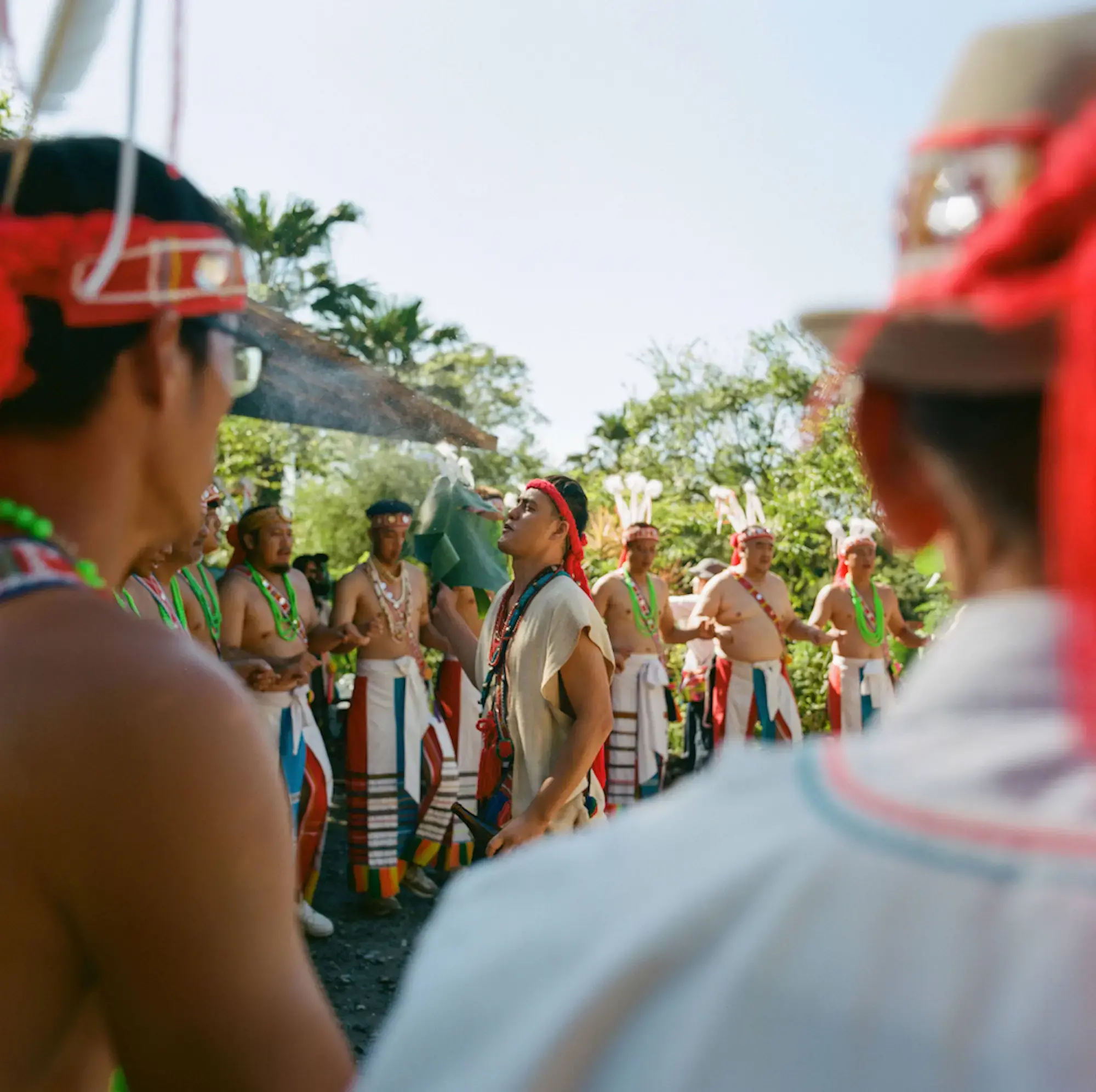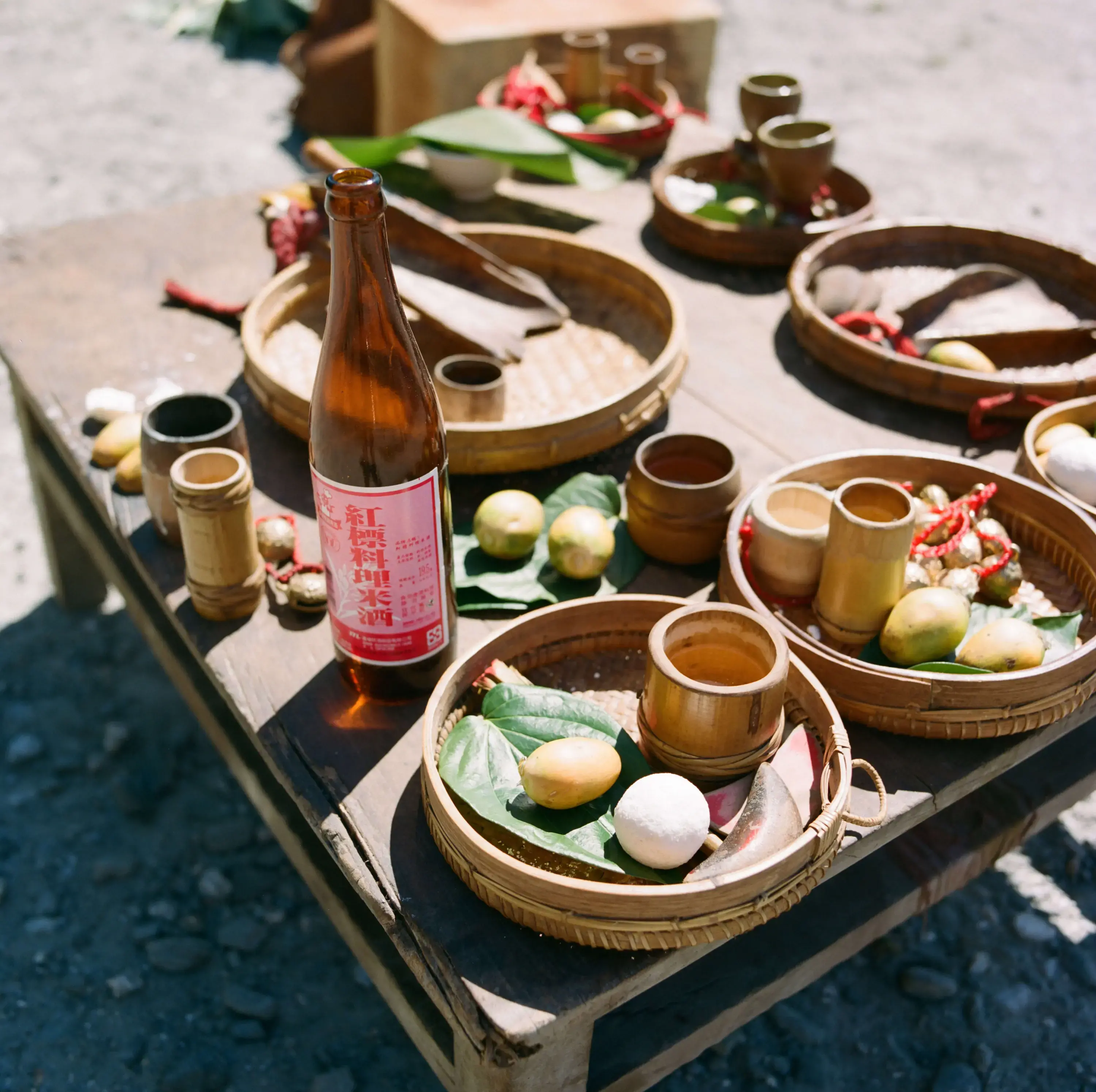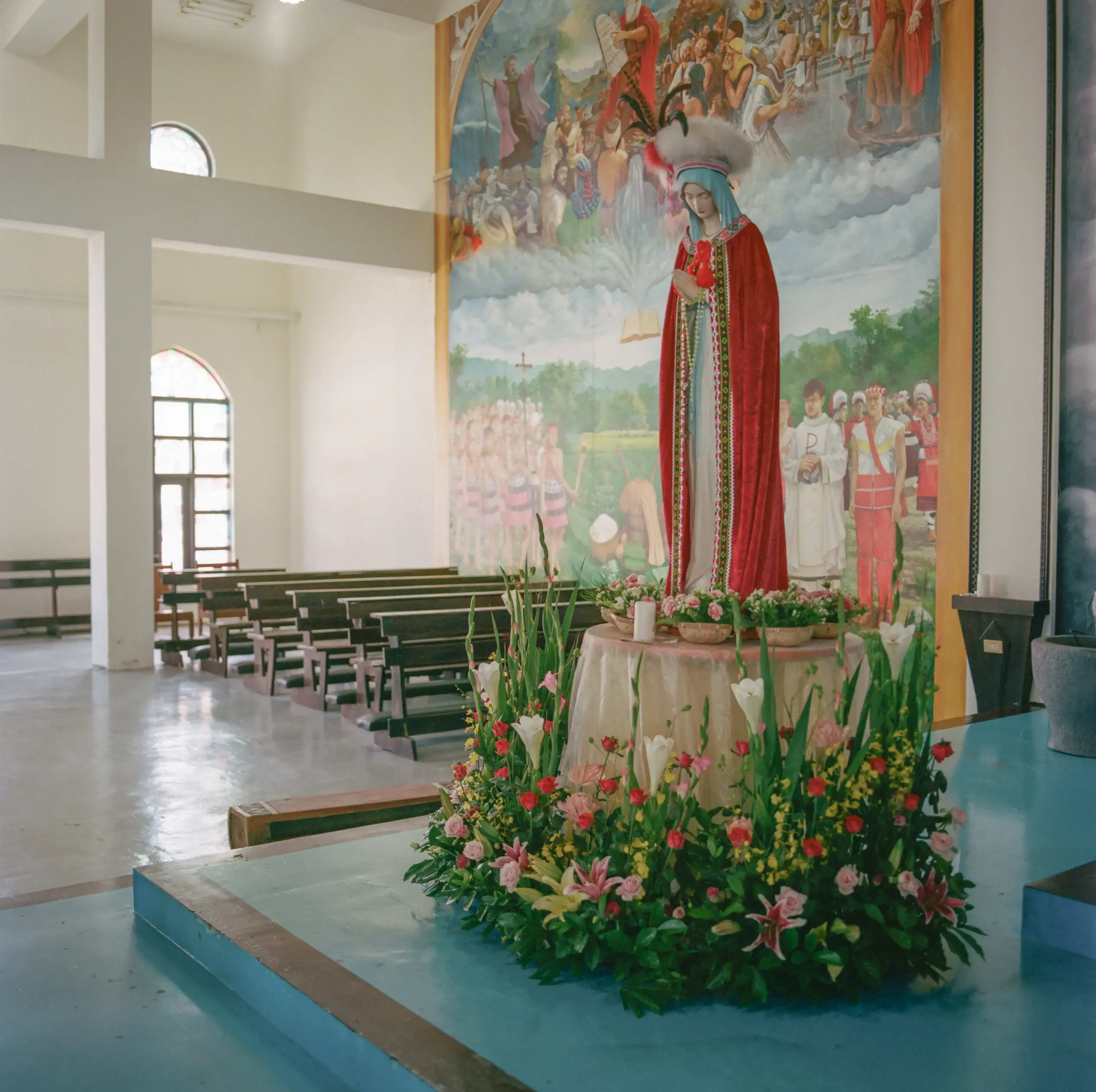
FATA’AN, Taiwan—Kulas Umo lights a cigarette against the fire, takes a short drag, then places it on the low wooden altar inside a hut in the forest. He repeats this routine six more times with six more cigarettes. Then he pours a splash of rice wine into seven small plastic cups set beside the smoldering offerings of tobacco.
Moving to the edge of the hut, Kulas, who goes by his given name as is his tribal convention, brings his hands to his mouth and calls out into the dense green expanse. He is trying to welcome back the ancestral spirits of a man seated at the fire.
The 38-year-old is a spiritual healer marshaling an ancient practice, but he also represents a very recent phenomenon: He is part of a revival of Amis traditional medicine in the Indigenous tribal village of Fata’an.

As a nonprofit journalism organization, we depend on your support to fund more than 170 reporting projects every year on critical global and local issues. Donate any amount today to become a Pulitzer Center Champion and receive exclusive benefits!
This is partly about addressing inequalities: Taiwan’s Indigenous communities still lack equal access to modern health care and suffer worse overall health outcomes than their Han Chinese counterparts, who make up about 97 percent of Taiwan’s population. The remainder are from Indigenous groups, of which the Amis are the largest, with about 200,000 people.
But it is also occurring at a pivotal political moment as Taiwan’s government under President Tsai Ing-wen, pushing back against Chinese claims to the island democracy, has increased efforts to support Indigenous politics and culture. Supporting the island’s Indigenous tribes helps prove Taiwan’s historical and cultural distinction from China and adds weight to the government’s ongoing sovereignty claims.
In 2016, Tsai issued the government’s first official apology to Indigenous Taiwanese, and she has since worked to address gaps in health care for Indigenous Taiwanese living in rural areas, providing transportation and local health services.

Kulas, however, does not believe these solutions can address all of his community’s health needs. While Taiwanese health services provide Western and traditional Chinese medicine, Indigenous groups practice a distinct kind of healing.
“When people go to the doctor, the first thing they tend to get is an X-ray or an MRI,” said Kulas, who sees many people with headaches and chronic pain, and acknowledges that many illnesses, including cancer and diabetes, require a trip to the hospital. “If the doctors say your body is fine and nothing is detected, but if you are still feeling unwell, then you can come see us.”


Traditional and modern medicine need not be seen as in conflict, said Ying-tzu Ena Chang, a professor at Taiwan’s National Dong Hwa University and an expert on Indigenous health. “We may see tension there, but for locals, when you have an illness, you may go to multiple channels to seek different methods of healing,” she said.
Back in the hut, sitting in front of the altar with cigarettes still burning, Kulas eyes a patch of rough red skin on his patient’s leg and surmises that a deceased uncle may have a message for the man. After inviting the uncle’s spirit to the hut, Kulas converses back and forth with the spirit by throwing a pair of weathered jiaobei, or wooden divination blocks, on the floor. He asks the deceased uncle’s spirit for assistance in pulling some bad energy out of the patient’s body. He works until the ancestral spirit is satisfied.

Restoring belief in traditional culture
Together with other young Indigenous residents of Fata’an, Kulas is working to breathe new life into traditional Amis healing practices, including shamanic rituals conducted by spiritual healers, who are called “sikawasay” in the Amis language.
According to Kulas, there are only 100 sikawasay left. And while 60 percent of them are over 60 years old, Kulas remains optimistic: Approximately 30 percent of sikawasay are under 40, and the number is increasing.
The lack of middle-aged sikawasay can be explained in part, Kulas said, by the postwar dissemination of Christianity and Western medicine that occurred after the nationalist Kuomintang set up their government on the island in 1949, fleeing China when the Communist Party won the Chinese Civil War. The two doctrines worked in tandem to try to discredit Indigenous knowledge.

Amis people are now trying to revive their language and culture as a way to explore and strengthen their ethnic identity.
“For our parents, just the act of speaking Amis in school was cause for great embarrassment and shame,” said Masako Siwmay, a 25-year-old Amis preschool teacher. But younger generations like hers are embracing their identity.
Chang, the Indigenous health expert, noted the ripple effects of this local movement. “It is not just about sikawasay practices being revitalized,” she said.

“They contain a wealth of knowledge — botany, medicine, linguistics, performative arts — which represents a holistic resurgence of Indigenous worldviews. This has important implications not just for these communities — for the young people, for the elders — but for dominant mainstream society as well. Making this worldview intelligible shifts our understanding of Indigenous cultures.”
Studies among minority and Indigenous groups in places such as New Zealand have shown that strong ethnic identity and intercultural competence can improve overall well-being, including lowering levels of depression and anxiety.
In Taiwan, the revival is central to that question of identity. Like most of his peers, Kulas grew up attending school taught in Mandarin Chinese and stayed connected to his Amis roots primarily through annual tribal events.
After graduating from college in 2011, Kulas moved to Taichung, Taiwan’s second-largest city, returning home each year to participate in the Ilisin festival.
During the 2014 holiday, however, Kulas unexpectedly stumbled into his first spiritual crisis.
Following a night of communal drinking and ritual dancing to honor his ancestors, Kulas suddenly felt uneasy and started crying. The next day, he saw a sikawasay, who called in Kulas’s ancestors. They had a message: Kulas had been chosen to serve as a sikawasay for his tribe. Kulas felt unsure whether he was ready to undertake this calling, or even whether his community would believe his story.
“I told [the ancestral spirits]: Give me some time to think it over,” Kulas said.

A test of courage
The first wave of resistance came from within his own tribe. Like many Amis of their generation, Kulas’s parents and relatives are practicing Catholics, and are told that sikawasay acted out the devil’s work. “Tribes used to approach the activities of the sikawasay with a sense of fear,” Kulas said.
It took five years for him to commit to training as a sikawasay, a decision brought about by seeing a friend going through her own crisis and receiving help from a sikawasay called Ayaka.
Kulas and other young Amis, sensing that their opportunity to learn from older generations may be closing, asked Ayaka if he would teach them Amis practices to harmonize the relationship between human beings and spirits. The sikawasay agreed, and it became a turning point for Kulas.


For the past four years, he has met with Ayaka and four other young students every Wednesday at the Taloan, or Hall of Ancestral Spirits. They receive instruction on how to conduct ceremonies, how to communicate with ancestral spirits, and how to meet the religious and cultural needs of their community.
The preschool teacher, Siwmay, believes these young healers are helping to meet young Amis’ cultural needs. “The sikawasay are kind of like our leaders. We can ask them questions and consider their advice,” she said. “Studying our culture no longer feels so distant.”
Kulas, whose day job is also at a preschool, believes that the greatest responsibility of the sikawasay is not just to practice medicine but to rewrite the narrative. “For modern sikawasay, we need to go and tell others what we are doing. So that others, including our own young people, can come to recognize what our traditional Amis beliefs really are.”
Last year, Kulas passed one of the final tests. It was a test of courage: He had to spend several nights in the forest alone with the ancestral spirits.

Now, as a recognized sikawasay, he lives his life in line with Amis principles.
“You can try to return to a traditional existence, but if your soul does not have the proper character, that way of living is useless,” Kulas said. “You can grow up in a concrete house and use a mobile phone … but, if in your heart and soul, you know what you should be doing, know how you should treat other people, then your spirit will forever be Amis.”










